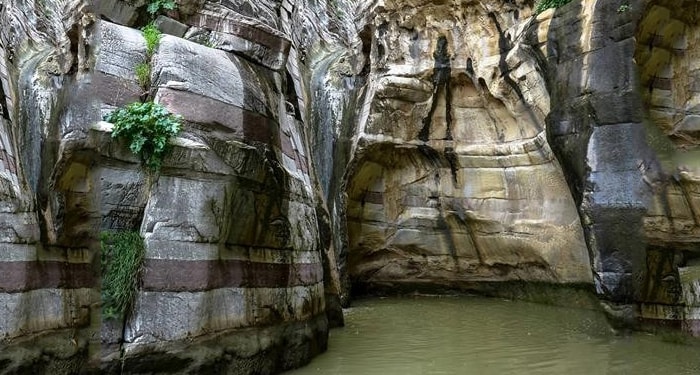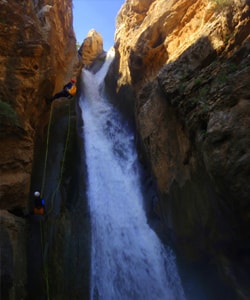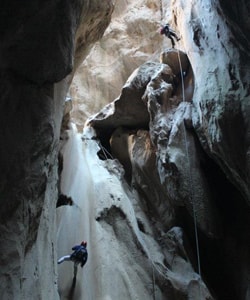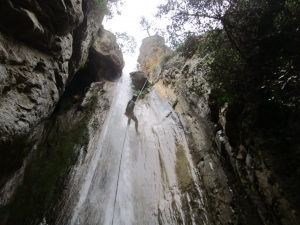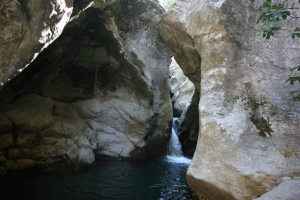One dominant feature of the area of Ierapetra, in front of the beautiful village and the minoan settlement of Vassiliki is the Gorge Ha. It is considered one of the wildest gorges in Crete, a rare morphological phenomenon of nature, probably caused by tectonic earthquake.
There are several places in Crete that are beautiful, but only a few of them can be described as winders of nature. A place that is a real wonder of nature is the gorge of Arvi that tears Arvion Mount in two, over which the shrine of Zeus Arveios was sited.
Portela Gorge is located at the south of the prefecture of Iraklion; the canyon starts from Hondros village and its exit is in Keratokambos. It is one of the most dangerous canyons in Greece.
The gorge of Ambas is located 53km south of Heraklion, in Asterousia Mountains. Starting from the small plateau formed near the village Paranymfi (710m altitude), it ends at the beach of Treis Ekklisies. This is a large (4km long) and beautiful canyon with many narrow passages, which is accessible only by experienced canyoners.
Platania Gorge is located in the Amari valley, 38km southeast of Rethymno, on the western outskirts of Psiloritis. It is a unique trail, with impressive cliffs, vertical limestone rocks, rock roofs and caves. The trail is recommended for experienced mountaineers, although the first part of the trek is quite easy and well pathed, even for children who are physically fit.
The gorge of Goula is located south of the village Kapetaniana and ends at Agios Ioannis seaside settlement. Like the two other gorges of the area (Koumos and Gerakia) it is impassable without canyoning equipment
Gorge Smiliano or Kalamafka is located north of the village Ano Meros, about 100km southwest of Heraklion city. Through the gorge runs the Lygiotis river which is supplied by the valleys of Gerakari and the slopes of Samitos Mount. The canyon has a lot of water in winter and crossing it, by any means, is very tough.
Kavousi Canyon is located near Keratokambos (near Ano Viannos, south Heraklion) in Dikti Mountain. The total length is 1km and the altitudinal difference between entrance and exit is 170m.






